Women in Refrigerators and Dead Men Defrosting – Is It Wrong?
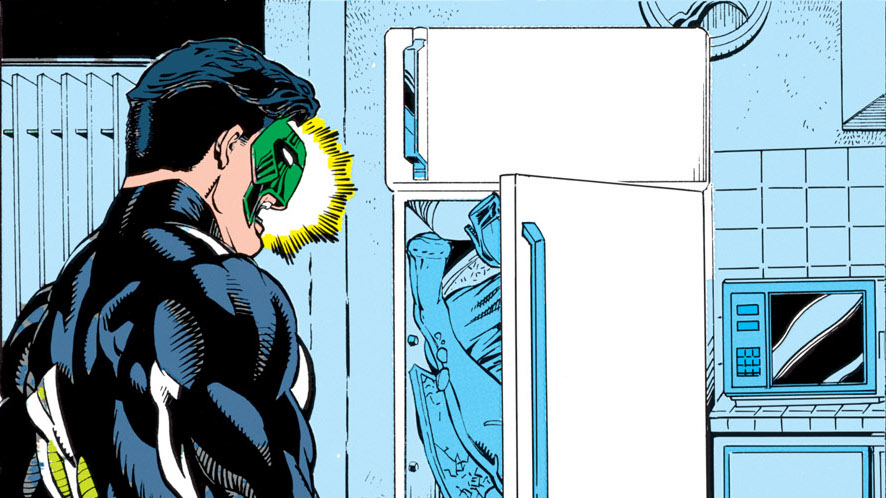
Join the community on Reddit for the latest Marvel & DC news!
Merriam Webster defines a trope as, “a word or expression used in a figurative sense”. Basically, a trope is a word or action that is commonly and repetitively used across a medium or genre. The idea is that no matter where the trope is used, it will always convey the same message.
Comic books are filled with tropes. The absent-minded professor, breaking the fourth wall, worldwide crisis leading to superheroes uniting, and using symbols as swear words immediately come to mind.
Some, symbols as swears for example, are completely harmless. They’re used as a way to convey anger, frustration, or a humorous tirade without offending anyone. Others, like the absent-minded professor, are inoffensively used to characterize someone at the expense of a percentage of the population.
Most tropes are simply pushed aside and never thought of as anything more than a harmless interpretation of someone or something. Others…well, they have found their way into the offensive category. They are used as a way to push the plot, give a
In 1994, DC unveiled their newest Green Lantern story. At the time, the book followed the exploits of new Lantern, Kyle Rayner. Kyle Rayner was a different kind of Green Lantern. Unlike Hal Jordan, John Stewart, and Guy Gardner, Kyle Rayner was an artist. As an artist, he possessed an imagination that the other three couldn’t possibly match. If Hal could create a cannon out of his ring, Kyle could create a warship. If John could create a hammer, Kyle could create the carpenter to wield the hammer. And if Guy could create…well, you get it.
Kyle is as gifted as gifted goes. I suppose that this is the reason he’s become one of my favorite Lanterns. He’s relatable. I’m an artist, he’s an artist. Anything he could create, I dare say, I could create better. Kyle was a breath of fresh air into the Lantern Corps. However, as creative as Kyle was, creativity was also his undoing.
In Green Lantern Volume #3, Issue #54 the writers of the book changed comics books forever. The issue, titled “Forced Entry” became a rallying point for women all over the world.
“Forced Entry” sees the two, Rayner and his girlfriend, Alex DeWitt in their apartment. As the two watch the news, they learn that there are strange happenings on the West Coast. DeWitt urges Rayner to go and investigate. He asks her to come but she replies that she’d rather not. As he leaves, she mentions that when he returns a surprise will be waiting for him.
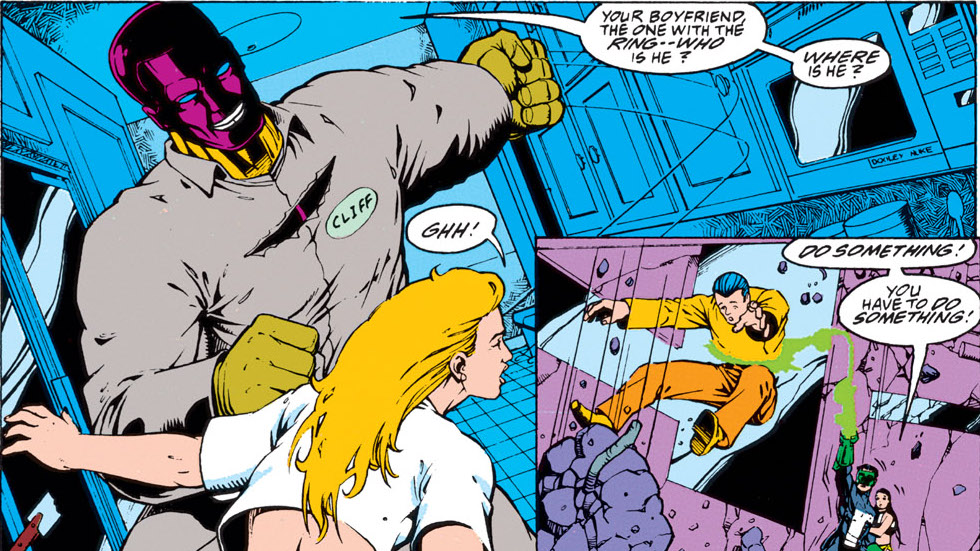
Shortly after Kyle leaves, she hears a knock on her door. She answers it only to find the villain, Major Force standing on the other side. The villain begins asking her questions about Kyle’s location. When she refuses to tell him, he jumps on top of her and strangles her to death. As Kyle returns home and enters his apartment he finds a strange note that reads, “present is in the fridge”. He makes his way to the fridge and opens it only to find the dead body of Alex DeWitt inside.
Women in Refrigerators
In the late 1990s, Gail Simone (Deadpool, Wonder Woman, Birds of Prey) came to the conclusion that women were often used as a mechanism to push a story along. She also realized that women were being used as a way to force men into action. That is, more often than not they’d become a plot point that revenge could be built upon. Worse yet, unlike the men who would simply bounce back from tragedy, women would take years to do so.
And if this sounds unfair, you’d be right.
She created a website that listed all the female comic book characters who had been used as a way to push men into action. The list was lengthy and included some high profile characters.
- Batwoman
- Black Canary
- Domino
- Elasti-Girl
- Elektra
- Gwen Stacy
- Invisible Woman
- Mockingbird
- Ms. Marvel
- Phoenix
- Psylocke
- Scarlet Witch
- Storm
- Wonder Woman
- Zatanna
And there’s more.
The list included the way in which they’d been used…and it wasn’t pretty. Rape. Assault. Maiming. Death. De-powering . Women in Refrigerators, as it was dubbed, was, as Simone defined it, the by-product of lazy writing.
Those most critical of it claimed that rather than creating well-rounded and rich characters, writers and creators took the easy way out. Instead of creating good stories or reasons for action, they simply killed off, maimed, or brutalized a woman and let the story unfold from there.
Of her findings, Simone said this, “This is a list I made when it occurred to me that it’s not that healthy to be a female character in comics. I’m curious to find out if this list seems somewhat disproportionate, and if so, what it means, really. These are superheroines who have been either depowered, raped, or cut up and stuck in the refrigerator. I know I missed a bunch. Some have been revived, even improved — although the question remains as to why they were thrown in the wood chipper in the first place.”
The term caught on and fans, activists, and many others came out from the woodworks to voice their displeasures with the trope. Women in Refrigerators became a rallying point for not only women but also men all over the world. It seemed that both sexes had their eyes opened. Women were being blatantly used in a way that would anger the most even-tempered person.
Women in Refrigerators is most commonly used when:
- A character, usually a villain, kills, assaults, maims, depowers, or rapes a female character
- A woman is killed as a means to push a male character into action
- The death of a woman creates an urgency of revenge in a male character
Once some
For example
Amazing Spider-Man #121 is one of the most famous comics in history. The story sees the Green Goblin take Spider-Man’s girlfriend, Gwen Stacy hostage. When confronted by Spider-Man, the villain drops her from the Brooklyn Bridge. When Spider-Man tries to save her with his webs, her neck is snapped and she is killed.
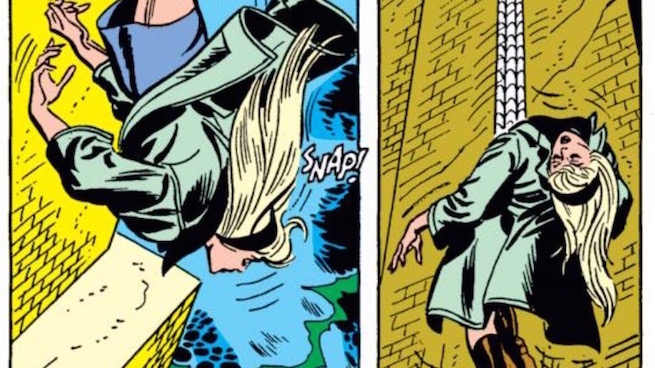
The story has had far-reaching ramifications since it was created. Not only did it show how far a company was willing to go to sell a book, but it also was one of the first times in history a major character was killed off. Her death sent shockwaves around the industry and opened the floodgates for character deaths.
At its heart, the Death of Gwen Stacy is a Women in Refrigerators trope. Gwen Stacy was killed as a mechanism to give Peter Parker a deeper backstory. She died so Peter Parker could become a better character. She died so Peter Parker would wake up each morning energized by something greater than keeping New York safe. And she died so the writers could cash in on the trope.
But she’s not alone as one of the most famous examples.
Like Amazing Spider-Man #121, The Killing Joke is a story that every comic fan knows. The book shows exactly how far the Joker will go to cause mayhem and chaos. The Killing Joke sees him trying to prove to both Commissioner James Gordon and Batman that all it takes to change a person is one bad day.
In it, the Joker takes Commissioner Gordon hostage, strips him down, and shows him images of, you guessed it, his daughter Barbara Gordon. The pictures show Barbara after she had been shot, raped, and paralyzed by the Joker. The images are graphic, violent, and once they’ve been seen, they cannot be unseen.
But this is only a part of the trope
Unlike most men, Barbara wouldn’t simply walk it off, bounce back and resume being a superhero. Instead, she changed everything about her identity and became Oracle, the watchful and resourceful eye of the superheroes. Barbara Gordon was everything that Gail Simone was trying to point out.
Then there’s Karen Page.
As far as tragic girlfriend stories, hers may be the worse. Karen’s life saw her as the romantic interest to Daredevil, the target of Kingpin, and a victim of the trope.
Desperate to get a new life, Karen moved to Hollywood, wound up addicted to drugs, found herself doing porn, and was killed by Bullseye. Karen is an extreme example of the trope but an example nonetheless. Not only did her happenings cause Daredevil’s identity to be revealed to Kingpin, but it also create the perfect storm for revenge.
These are only three of many examples of what Gail Simone was talking about.
Not because I’m a man and not because I like to cause debate, but I can’t help but wonder if Women in Refrigerators actually a thing. Don’t get me wrong. I don’t aim to disregard what Gail Simone said, continues to say, or what fans have been saying for decades. I simply wonder if there’s even something there?
Let me explain.
Dead Men Defrosting
For every woman that’s landed in a precarious spot, there has been an equal number of men in that same spot. Without giving it more than five seconds of thought…
Jason Todd was brutalized and killed by the Joker as a way of getting to Batman. He was maliciously beatdown with a crowbar for what seemed to be an eternity and then left in a warehouse that went up in a flaming ball of fire. Jason Todd was the poster boy for brutality in comics for years. His death was so far-reaching that Batman still feels that he’s to blame for it. Jason Todd was the boy who Batman let die.
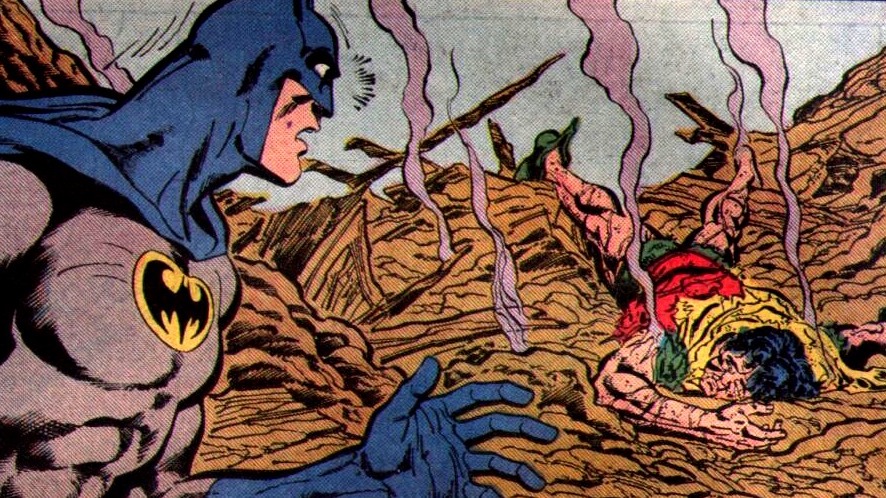
Jason Todd’s death became the revenge point for Batman. As a result of his death, Batman fearlessly chased Joker around the world, eventually catching up to him and getting his justice.
But that’s only one example.
There’s Captain America, whose death, over and above creating a media frenzy, became a rallying point for both male and female superheroes.
The Civil War conflict saw Captain America and Iron Man come to blows. The two had, shall we say, a difference of opinion that saw heroes of all shapes and sizes align themselves with either hero. The story had explosions, superheroes thrown in jail, villains who became heroes, and death.
At the height of the conflict, after multiple destructive battles, Captain America ends up turning himself over to the authorities. He does this because he sees the collateral damage caused by their war and doesn’t want any more people harmed. As he walks
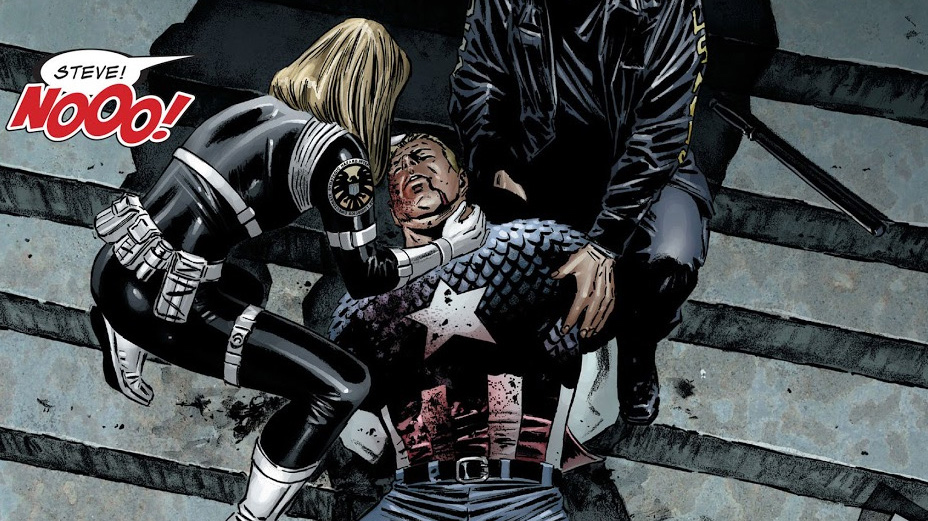
His death was a plot point designed to be a rallying point that unified the heroes…male and female. It worked. At his death, Civil War was over. Oh, and the other death I eluded to? Goliath, a male superhero.
And those are only two of many examples where the male character is “fridged” as a mechanism to move the story along. “Fridged”, by the way, is the clever name given to a character who has received the Women in Refrigerators treatment. Below are a few more examples of male characters being used as a plot point.
- Charles Xavier
- Archie Andrews
- Batman
- Uncle Ben
- Superman
- The Flash (who disappeared for multiple decades as a result)
To counter what Women in Refrigerators claimed, the term Dead Men Defrosting was created. This, of course, alludes to what I just laid out. It claims that yes, women do die for the purpose of moving a story along. However, so do men.
This has me thinking about whether or not either should exist. I don’t think that the idea of pushing a hero into action through revenge shouldn’t continue. That sort of storytelling has been around for longer than we have been able to document it. Revenge as a plot point has served and will continue to serve the storytelling community well. What I ask is this…should the world be so sensitive to the trope? Should the world even care that both sexes are being sacrificed to push a story along?
Counter claim
Now, I’d be remiss if I didn’t mention the counterclaim made on behalf of Women in Refrigerators. It acknowledges that there has been the death and maiming of men in comics. The counter recognizes that men go through the same things that women go through. (Un)fortunately, the claim also states that while men go through these horrors, the frequency at which they do pales in comparison to the women. It also states that when men are killed, they are often not sexually assaulted. Think the aforementioned Barbara Gordon or Sue Dibny. Lastly, it says that if a man sacrifices himself to save the world or he is depowered, he typically comes back to life quickly or regains his powers right away. Women, it claims, do not.
Doesn’t that make sense? Not the timeline stuff. There’s no argument, aside from the decades the Flash was out of the spotlight, to counter the counter with. I refer to how many heroes of each sex there are.
Doesn’t the law of averages say that the higher percentage of the population, men, end up with more, in this instance, stories of revenge? Maybe I’m wrong or out of line but if you stand 100 men beside 50 women, the likelihood of something happening to incite the men is greater? Not the percentage. The percentage should be the same. I’m talking strictly numbers. 50% of 100 men is 50 men. 50% of 50 women are 25 women.
I urge you not to take this in an offensive way. Instead, I urge you to consider the math. Twice as many men
But…
At the end of the day, should we even care about the trope? Should we even care that Gwen Stacy, Jason Todd, Barbara Gordon, Steve Rogers, and Karen Page suffered immensely to tell a great story? Does it really even matter?
Let me know.
Cheers,
Joel
Liked this article? Join the community on Reddit for the latest Marvel & DC news!

